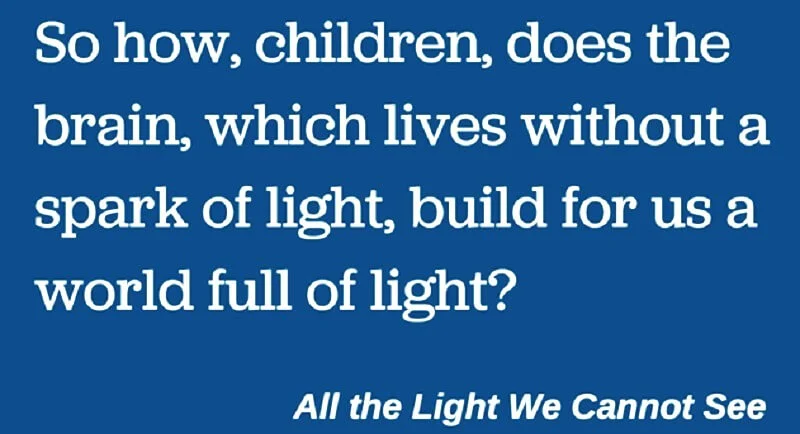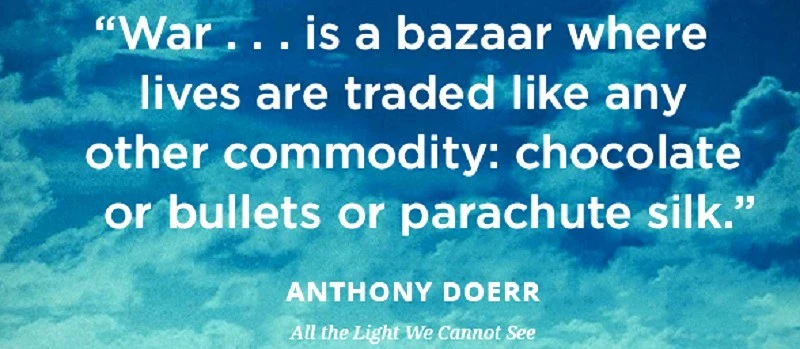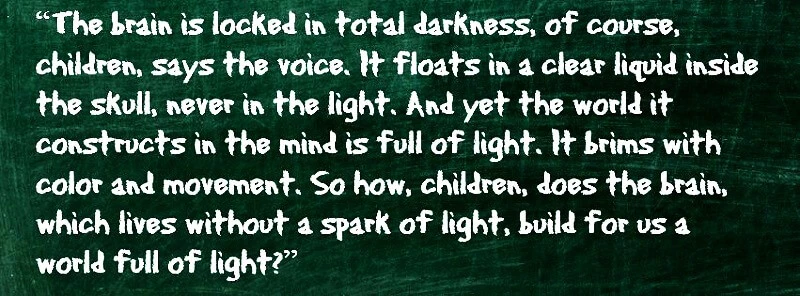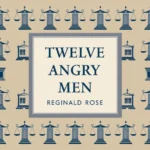Introduction
“All the Light We Cannot See PDF” is a captivating novel penned by Anthony Doerr, weaving a narrative tapestry of love, war, and resilience. Set against the backdrop of World War II, this Pulitzer Prize-winning masterpiece takes readers on a poignant journey through the lives of two unforgettable protagonists, Marie-Laure LeBlanc and Werner Pfennig.
| Name of PDF | All the Light We Cannot See |
|---|---|
| No Pages | 499 |
| Author | Anthony Doerr |
| Originally Published | 6 May 2014 |
| Language | English |
| Genres Awards | Historical Fiction, Novel, War stories Pulitzer Prize for Fiction, Andrew Carnegie Medal for Excellence in Fiction |
| Size | 1.81 MB |
| latest edition |
Table of Contents

Synopsis of the Novel
The novel follows the parallel yet intersecting lives of Marie-Laure, a blind French girl, and Werner, a German orphan with a talent for engineering. As the war engulfs Europe, their paths converge in the besieged city of Saint-Malo, France. With lyrical prose and intricate storytelling, Doerr paints a vivid portrait of their struggles, courage, and the power of human connection amidst the chaos of war.
Historical novel Blood Meridian Graphic Novel
Setting the Scene: World War II Background
To truly understand the context of the novel, it’s essential to delve into the historical backdrop of World War II. The conflict, spanning from 1939 to 1945, reshaped the course of history, leaving indelible scars on nations and individuals alike. Against this tumultuous canvas, “All the Light We Cannot See” unfolds, capturing the essence of a world torn apart by violence and despair.
Characters Overview
Marie-Laure LeBlanc
Marie-Laure emerges as the heart of the story, navigating a world of darkness with resilience and grace. Despite her blindness, she finds solace in the wonders of the natural world and the guiding light of her father’s love. As she flees Nazi-occupied Paris, her journey becomes a quest for survival and hope.
Werner Pfennig
Werner, on the other hand, embodies the complexities of moral ambiguity. Raised in an orphanage, his aptitude for engineering leads him into the ranks of the Nazi army. Yet, amidst the horrors of war, his conscience wrestles with the atrocities he witnesses, illuminating the moral dilemmas faced by ordinary individuals caught in the machinery of conflict.
Supporting Characters
Throughout the narrative, a rich tapestry of supporting characters adds depth and dimension to the story. From Marie-Laure’s devoted father to Werner’s conflicted comrade, each character contributes to the novel’s overarching themes of humanity and redemption.
Themes Explored
Light and Darkness
Central to the novel is the metaphorical interplay between light and darkness. While Marie-Laure is deprived of physical sight, she perceives the world through other senses, finding beauty amidst the shadows. In contrast, Werner grapples with the darkness within himself, seeking moments of illumination amidst the chaos of war.
Survival and Sacrifice
The novel explores the lengths to which individuals will go to survive amidst the ravages of war. From Marie-Laure’s courageous journey across enemy lines to Werner’s struggle to retain his humanity in the face of adversity, “All the Light We Cannot See” underscores the transformative power of sacrifice and resilience.
Hope and Resilience
At its core, the novel is a testament to the enduring power of hope in the darkest of times. Through moments of connection and compassion, Marie-Laure and Werner discover glimmers of light amidst the rubble of war, inspiring readers to find hope in the face of despair.

Narrative Structure and Style
Doerr’s narrative unfolds in a non-linear fashion, alternating between Marie-Laure and Werner’s perspectives with seamless precision. His lyrical prose evokes a sense of timelessness, inviting readers to immerse themselves in the rich tapestry of the story.
Critical Reception and Awards
Since its publication in 2014, “All the Light We Cannot See” has garnered widespread acclaim from critics and readers alike. The novel received the Pulitzer Prize for Fiction in 2015, cementing its status as a modern classic.
Impact on Readers and Popular Culture
The novel’s profound themes and compelling characters have resonated with readers around the world, sparking discussions on morality, empathy, and the human condition. Its enduring popularity has led to numerous accolades and adaptations across various mediums.
Analyzing Historical Accuracy
While “All the Light We Cannot See” is a work of fiction, Doerr meticulously researches the historical context, ensuring authenticity and accuracy in his portrayal of World War II. From the intricacies of Nazi-occupied France to the technological innovations of the era, the novel offers a compelling glimpse into the past.
Discussion on the Author, Anthony Doerr
Anthony Doerr’s talent as a storyteller shines brightly in “All the Light We Cannot See.” With his masterful prose and keen insight into the human psyche, he crafts a narrative that resonates long after the final page is turned.
Cinematic Adaptation
In 2020, it was announced that “All the Light We Cannot See” would be adapted into a feature film, further cementing its place in popular culture. The adaptation promises to bring Doerr’s evocative world to life on the silver screen, captivating audiences with its visual splendor and emotional depth.
Exploring Symbolism
Throughout the novel, Doerr employs symbolism to enrich the narrative and deepen its themes. From the intricately crafted miniature houses to the elusive radio broadcasts, each symbol invites readers to ponder the deeper meanings hidden beneath the surface.
Lessons and Takeaways
At its core, “All the Light We Cannot See” is a testament to the resilience of the human spirit in the face of adversity. Through Marie-Laure and Werner’s journeys, readers are reminded of the transformative power of empathy, courage, and hope.
Connecting to Contemporary Issues
While set against the backdrop of World War II, the novel’s themes of love, loss, and redemption remain relevant in today’s world. As societies grapple with issues of conflict and division, “All the Light We Cannot See” serves as a poignant reminder of the enduring power of compassion and humanity.

Conclusion to All the Light We Cannot See PDF
In conclusion, “All the Light We Cannot See” is a luminous masterpiece that shines brightly in the literary landscape. With its evocative prose, richly drawn characters, and timeless themes, it stands as a testament to the indomitable human spirit and the enduring power of hope in the darkest of times.
FAQs about All the Light We Cannot See PDF
What makes “All the Light We Cannot See” unique among World War II novels?
One aspect that sets this novel apart is its lyrical prose and intricate storytelling. Anthony Doerr weaves together multiple narratives with precision, offering readers a rich tapestry of interconnected lives amidst the chaos of war.
How does the novel explore the theme of light and darkness?
The metaphor of light and darkness is central to the narrative, symbolizing hope amidst despair. Through Marie-Laure’s blindness and Werner’s moral struggles, the novel examines the contrast between physical and metaphorical illumination.
What role do the supporting characters play in the story?
Supporting characters add depth and complexity to the novel, offering different perspectives on the themes of love, loss, and resilience. From Madame Manec’s acts of resistance to Etienne’s hidden bravery, each character contributes to the richness of the narrative.
What lessons can readers take away from “All the Light We Cannot See”?
At its core, the novel emphasizes the importance of empathy, resilience, and the power of human connection. Through Marie-Laure and Werner’s journeys, readers are reminded of the enduring strength of the human spirit in the face of adversity.
Is “All the Light We Cannot See” based on a true story?
While the novel is a work of fiction, Anthony Doerr meticulously researched the historical backdrop to ensure authenticity in his portrayal of the setting and events during World War II. While the characters themselves are fictional, their experiences are grounded in the historical context of the time period.
What is the central idea in All the Light We Cannot See?
the impact of war on innocent lives
Is there romance in All the Light We Cannot See?
Werner Pfennig falls in love with Marie-Laure LeBlanc, but their relationship does not have a chance to grow
How sad is All the Light We Cannot See?
Some parts were so poignant and exquisite that they brought tears to my eyes.
What is the main point of All the Light We Cannot See?
illustrates how pursuing human desires can lead to war and misery




